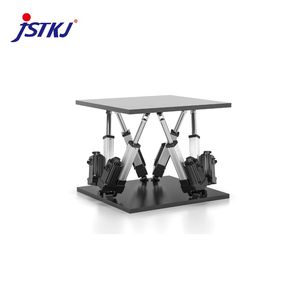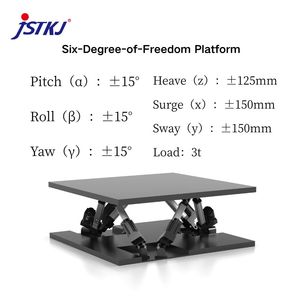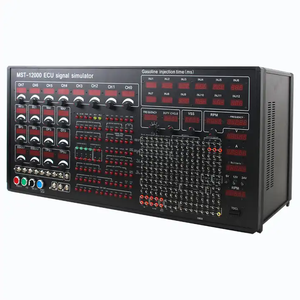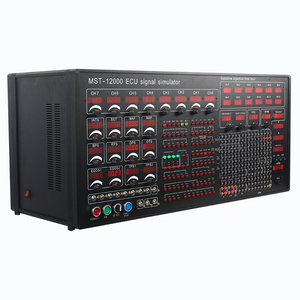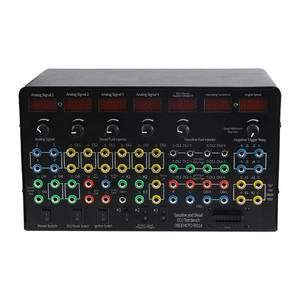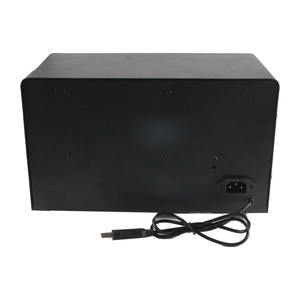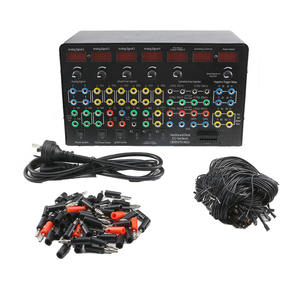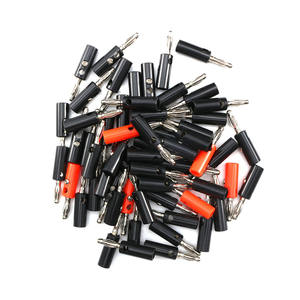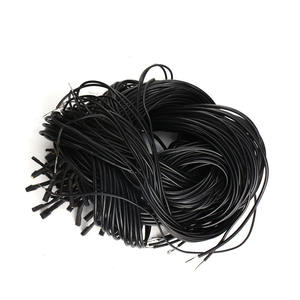Types of Engine ECU Simulators
An engine ECU simulator is a sophisticated tool designed to emulate the functions of an engine control unit (ECU) in a vehicle. The ECU serves as the brain of a vehicle's engine system, processing data from various sensors and controlling actuators to optimize engine performance. ECU simulators enable engineers and technicians to test and develop software, diagnose issues, and train on ECU-related tasks without the need for a physical vehicle's ECU.
Expert Tip: Engine ECU simulators are invaluable for automotive engineers and technicians, allowing for safe testing and development without risking damage to actual vehicle components.
Hardware-in-the-Loop (HIL) Simulators
These represent the most advanced and comprehensive engine ECU simulators available. HIL simulators integrate directly with the physical hardware of the ECU, including control algorithms and input/output systems.
Best for: Extensive testing and validation of ECU performance under various scenarios and conditions.
Software-in-the-Loop (SIL) Simulators
SIL simulators focus on testing and validating the software algorithms of the engine ECU. They run the ECU's software code in a simulated environment on a computer.
Best for: Software validation without the need for physical hardware.
Model-in-the-Loop (MIL) Simulators
MIL simulators are used to test and validate the models and simulations used in engine ECU software development, providing a platform to validate behavior before implementation.
Best for: Early-stage development and modeling verification.
Real-Time Simulation
These sophisticated simulators can replicate the ECU's behavior in real-time, allowing for dynamic interactions and control of the engine model for advanced testing scenarios.
Best for: Dynamic systems integration and advanced validation testing.
Portable ECU Simulators
Compact and lightweight, these simulators offer mobility without sacrificing essential functionality. Despite their small size, they effectively mimic the critical functions of actual ECUs.
Best for: On-the-go testing, diagnostics, and field work.
Simulator Type Comparison Chart
| Simulator Type | Primary Application | Hardware Required | Complexity Level | Cost Range |
|---|---|---|---|---|
| Hardware-in-the-Loop (HIL) | Complete ECU validation | High (Physical ECU components) | High | $$$$ (Highest) |
| Software-in-the-Loop (SIL) | Software algorithm testing | Medium (Computer only) | Medium | $$$ (Moderate-High) |
| Model-in-the-Loop (MIL) | Early development validation | Low (Computer only) | Medium-Low | $$ (Moderate) |
| Real-Time Simulation | Dynamic system testing | Medium-High | High | $$$$ (High) |
| Portable ECU Simulators | Field diagnostics | Low | Low | $ (Lowest) |
Specifications and Maintenance of Engine ECU Simulators
While specifications vary by model and manufacturer, all Engine ECU simulators share certain fundamental components and requirements. Understanding these specifications is crucial for proper selection and operation.
Key Specifications
Processing Power
Engine ECU simulators utilize powerful processors similar to those in actual vehicles. These processors form the core of the simulator, handling all calculations and information processing tasks.
Memory Systems
Two memory types are essential: RAM for temporary data storage and flash memory for retaining critical programs and information even when powered off. The memory capacity directly impacts simulation capabilities.
Input/Output Interfaces
Comprehensive connection options include CAN, LIN, Ethernet for data exchange, analog/digital I/O for sensor simulation, and development interfaces like JTAG or SWD for programming access.
Power Requirements
A stable power source is critical for optimal simulator function. Most models can handle minor power fluctuations but require consistent voltage for accurate performance.
Software Compatibility
ECU simulators run specialized software mirroring automotive systems, with many offering updateable control algorithms for testing different scenarios or improving performance.
Temperature Tolerance
Operating temperature range typically spans from -40°C to 85°C. Exceeding these limits can damage components and lead to performance issues or complete failure.
| Specification Category | Typical Range/Requirements | Impact on Performance |
|---|---|---|
| Processor Speed | 100MHz - 1GHz+ | Determines simulation complexity and response time |
| RAM Capacity | 128KB - 4GB | Affects multitasking and complex simulation capabilities |
| Flash Memory | 512KB - 16GB | Determines program storage capacity and model complexity |
| Communication Protocols | CAN, LIN, FlexRay, Ethernet | Defines compatibility with vehicle systems |
| Power Supply | 5-14V DC | Affects stability and operational reliability |
| Operating Temperature | -40°C to 85°C | Determines environmental usage limitations |
Essential Maintenance Practices
Proper maintenance of engine ECU simulators ensures longevity, accuracy, and reliable performance. Implementing these maintenance practices helps prevent costly downtime and extends the service life of your equipment.
Regular Cleaning
Dust accumulation can cause overheating and performance degradation. Use a soft, dry cloth or electronics-safe brush for external cleaning, and compressed air for internal dust removal. Never use liquids or wet cloths.
Frequency: Monthly or as needed based on environment
Environmental Control
Store and operate simulators in clean, dry, well-ventilated areas away from heat sources, moisture, chemicals, and high-EMI devices that could cause interference.
Best practice: Maintain stable temperature and humidity levels
Software Updates
Regularly check for and install manufacturer updates to firmware and software. These updates often include performance improvements, bug fixes, and compatibility enhancements.
Frequency: Quarterly or as notified by manufacturer
Hardware Inspection
Routinely examine power supplies, cables, and connections for wear, damage, or looseness. Replace worn components immediately to prevent catastrophic failures during critical operations.
Frequency: Monthly
Important: Always follow manufacturer guidelines for maintenance procedures and schedules. Improper maintenance can void warranties and potentially damage sensitive electronic components.
How to Choose an Engine ECU Simulator
Selecting the right engine ECU simulator requires careful consideration of multiple factors. The optimal choice depends on your specific requirements, technical needs, and budget constraints. This guide outlines the key selection criteria to help you make an informed decision.
Essential Selection Criteria
Realism and Fidelity
The simulator's ability to accurately replicate real-world engine behavior is paramount. Higher fidelity simulators provide more realistic responses and better testing outcomes.
Key question: How accurately does the simulator replicate actual ECU behavior?
Compatibility and Integration
Ensure the simulator works seamlessly with your specific ECU hardware and software platforms. Compatibility issues can render even the most advanced simulator ineffective.
Key question: Will this simulator integrate with my existing systems?
Modeling and Simulation Capabilities
Advanced modeling features allow for more comprehensive testing scenarios. Look for simulators that offer detailed parameter adjustments and real-time feedback.
Key question: Does this simulator handle the complexity of tests I need to run?
User Interface and Usability
An intuitive interface significantly reduces learning curves and increases productivity. Test the user interface before purchase if possible.
Key question: How steep is the learning curve for new users?
Support and Documentation
Comprehensive documentation, responsive technical support, and an active user community can be invaluable resources when troubleshooting issues.
Key question: What support options are available after purchase?
Cost and Licensing
Consider both initial purchase costs and ongoing expenses such as maintenance contracts, updates, and training. Some simulators use subscription models while others offer perpetual licenses.
Key question: What is the total cost of ownership over 3-5 years?
Expert Advice: When possible, request a trial or demonstration period before committing to a purchase. This hands-on experience will reveal usability issues and compatibility concerns that may not be apparent from specifications alone.
| Selection Factor | Priority Level | Evaluation Method |
|---|---|---|
| Realism/Fidelity | High | Test against known engine responses; review technical specifications |
| Compatibility | Critical | Check supported protocols, hardware interfaces, and software platforms |
| Simulation Capabilities | High | Review feature list; compare with testing requirements |
| User Interface | Medium | Hands-on demonstration; user reviews |
| Support | Medium-High | Check support hours, response times, documentation quality |
| Cost/Licensing | Medium | TCO analysis; compare licensing models |
How to DIY and Replace Engine ECU Simulator
Whether you're upgrading to a newer model or replacing a malfunctioning unit, installing an engine ECU simulator requires careful attention to detail. Follow this comprehensive step-by-step guide to ensure a successful installation.
Safety Warning: Always disconnect power sources before beginning any installation or replacement procedure. Electrostatic discharge can damage sensitive electronic components - use appropriate anti-static measures.
Step-by-Step Replacement Guide
-
Consult the documentation
Thoroughly review both the old simulator's manual and the documentation for your new unit. Note any differences in connection requirements, power specifications, or mounting considerations.
-
Locate the existing ECU simulator
The simulator is typically positioned under the driver's side dashboard or near the engine compartment. In testing environments, it may be rack-mounted or on a dedicated workbench.
-
Document the current setup
Before disconnecting anything, take detailed photos of all connections and cable routing. Label cables if necessary to ensure proper reconnection later.
-
Remove the old simulator
Carefully disconnect all cables and connectors, noting their orientation. Remove mounting hardware using appropriate tools, typically a screwdriver or socket wrench.
-
Prepare the new simulator
Unpack the new unit and inspect for any shipping damage. Configure any DIP switches or jumpers according to the manufacturer's instructions before installation.
-
Install the new simulator
Mount the new simulator in the same location as the old unit. Securely fasten all mounting hardware to prevent vibration issues.
-
Connect all interfaces
Following your documentation and photos, reconnect all cables and connectors to the appropriate ports. Ensure firm connections but avoid over-tightening which can damage connectors.
-
Verify connections
Double-check all connections against your documentation before applying power. Incorrect connections can damage both the simulator and connected systems.
-
Power up and test
Restore power and verify that the simulator boots correctly. Run basic diagnostics to confirm proper operation before proceeding with more complex testing.
-
Configure and calibrate
Following the manufacturer's instructions, configure the simulator settings for your specific application. Calibrate as needed to ensure accurate simulation.
Professional Insight: Keep the old simulator as a backup until you've fully verified that the new unit functions correctly in all your testing scenarios. This prevents downtime if issues arise with the new installation.
Frequently Asked Questions
An Engine ECU (Engine Control Unit) is the primary computer in a vehicle that manages engine operation. It processes data from multiple sensors monitoring conditions like air intake, fuel mixture, engine temperature, and exhaust composition. The ECU uses this information to optimize engine performance, fuel efficiency, and emissions by controlling various actuators and systems in real-time.
An Engine ECU Simulator replicates the functionality of a vehicle's actual Engine Control Unit in a controlled environment. It generates the same signals, processes inputs, and produces outputs that mimic a real ECU's behavior without requiring a physical vehicle. This allows engineers and technicians to test, develop, and troubleshoot engine management systems safely and efficiently.
Engine ECU Simulators serve multiple critical purposes in automotive development and repair:
- For engineers: Testing new ECU software and calibrations without vehicle risks
- For technicians: Diagnosing complex engine management issues
- For manufacturers: Validating components and systems before vehicle integration
- For educational institutions: Training automotive technicians on ECU systems
- For aftermarket developers: Creating and testing performance modifications
These simulators save time, reduce development costs, and eliminate risks associated with testing experimental code on actual vehicles.
Yes, using an Engine ECU Simulator is safe for the vehicle when used properly. In fact, simulators enhance safety by allowing potentially risky tests to be conducted in a controlled environment rather than on an actual vehicle. However, when connecting to real vehicle components, always follow manufacturer guidelines to prevent electrical damage. The simulator itself is designed with protection circuits to prevent harm to connected systems.
While Engine ECU Simulators are versatile, they typically require configuration for specific vehicle makes and models. Most professional-grade simulators support multiple vehicle platforms through software profiles and adaptable hardware interfaces. When selecting a simulator, verify compatibility with your target vehicles, communication protocols (CAN, LIN, FlexRay), and the specific ECU models you'll be working with. Universal simulators exist but may offer less detailed simulation for specific vehicle models.





















